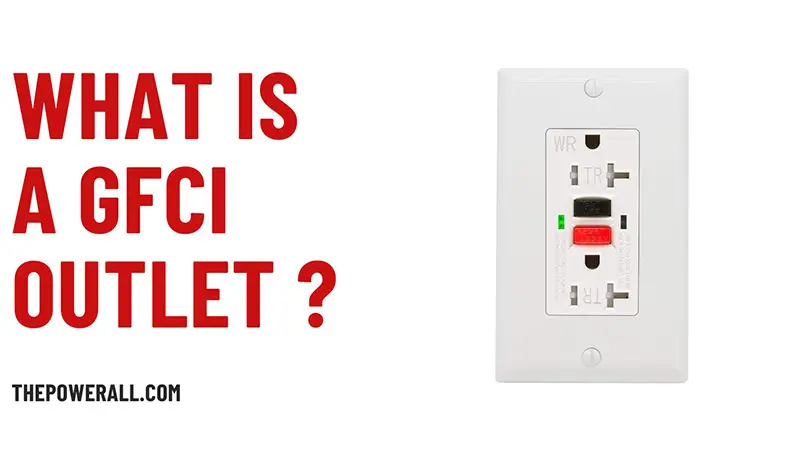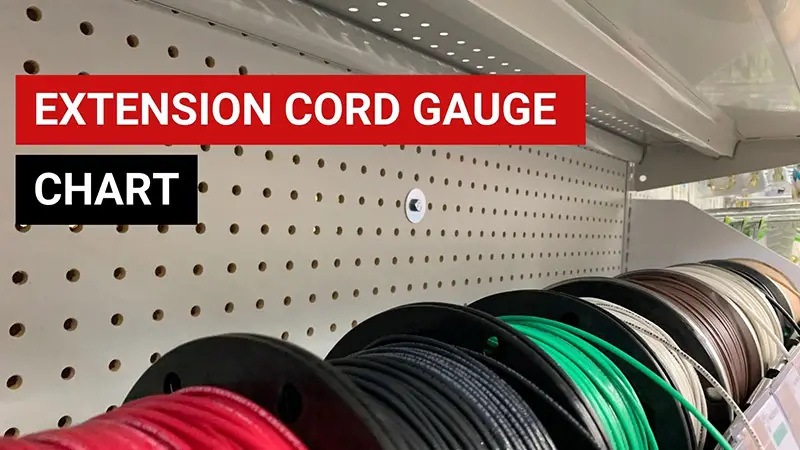Many people are curious about the 10 AWG amps, but they still don’t have the faintest idea about this matter. Understanding that, our website is honored to publish this post with the prospect of helping people grasp more helpful knowledge and insights into this topic.
What Should You Know About The 10 AWG Ampacity & Diameter?
The 10 gauge amp capacity is different at different temperatures:
- 30 amps at 140 degrees F (60 degrees C)
- 35 amps at 167 degrees F (75 degrees C)
- 40 amps at 194 degrees F (90 degrees C)
In most situations, the 35-amp circuit is a suitable power rating for the 10 gauge wire parameter. Its diameter measures 0.1019 inches (or 2.588 mm).
However, the three factors presented below should be considered carefully before deciding whether your 10 gauge wire diameter is suitable for a specific amperage.
80% Rule
This rule is not strange to numerous specialists in the electricity field, which helps ensure your safety when you try to install a power circuit.
It focuses on the operation current that an automotive wire can run, avoiding unexpected issues, such as overloading or electrical circuits. For example, a 10 gauge wire requiring about 35 amps at 167 degrees F should only need 80 percent of its amperage rating for usage purposes.
In other words, 28 is the real amperage of a 35-amp circuit for safety reasons. Similarly, the actual ampacity for 30 amps and 40 amps is 22 and 32 amps, respectively.
This is because if the power number surpasses this standard, the wire cannot endure the heat of up to 75 degrees Celsius, which can induce fire as a consequence.
Wire Length
Wiring length is an important factor that you should pay attention to. If you install a longer wire than needed, the voltage drop is likely to be rendered as a result.
If you still don’t comprehend, remember that an increasing length of 50 ft can make the amperage capacity of a 10 gauge wire drop 10%. Specifically, taking the 80% rule and the wire length into account, we have the ampacity at 167 degrees F (75 degrees C) – the most common temp:
- 50 ft: 25.4 amps
- 100 ft: 23.3 amps
- 150 ft: 21.5 amps
- 200 ft: 20 amps
Type Of Conductor
There are two kinds of conductors that you should know about, namely aluminum wires and copper wires. Each will have different heat resistance thresholds, components, and functions that are appropriate for use in some situations.

For instance, electric wires made of aluminum can endure a heat level of up to 90 degrees Celsius. In comparison, the ones made of copper only handle the heat threshold of 75 degrees Celsius.
In addition, you should also take a look at the power gauge of both conductor types. Although facing a similar electrical current, the aluminum conductor can be much thicker than the copper one. This can be boiled down to the more ferocious reaction of aluminum with oxygen elements, thereby restricting its absorption capacity.
Accordingly, due to the different characteristics and features of these two electrical conductors, you should be wise when determining which one is suitable for your use and need.
Three Important Kinds Of 10-Gauge Cables
It is common knowledge that wires are not used separately but in cables. There are three popular cable types that we are going to introduce as follows:
- 10/2 Wire (or the so-called 10 2 Wire) is a cable consisting of two wiring conductors and one supporting base wire.
- 10/3 Wire (or the so-called 10 3 Wire) is a cable consisting of three wire conductors and one ground wiring.
- 10/4 Wire (or the so-called 10 4 Wire) is a cable that includes a total of four wiring conductors together with one supporting ground wire.
One cable rarely contains more than four wires. In addition, these are color-coded to differentiate wiring cables and help users easily spot which one they want to use. And the color coding system may vary greatly in different nations, so you should notice this.
See more: 10/2 or 10/3 wire which is better?
Frequently Asked Questions
Can A 10 Gauge Wire Handle 50 Amps?
The answer is no, as the max amps for 10 gauge wire peaks at the amperage volume of 32.5 amps. Therefore, 50 is much larger and exceeds the ampacity that a normal 10 gauge wire can efficiently handle.
How Far Can You Run A 10 Gauge Wire?
With a 30-amp circuit running through it, the 10 AWG wire can extend to 128 ft.
Where Does The 10 AWG Wire Required?
Generally speaking, the 10 gauge wire is not normally applied to residential settings but shows a variety of functions in different fields. For example, if you run the 10 gauge wire for the amperage value of 30, it can endure the heat in the range from -10 to over 60 degrees Celsius.
Or if you use the 10 gauge on a suitable circuit breaker’s setting, this wiring can be widely used to satisfy numerous household uses and residential applications.
The Bottom Line
After contemplating our article, you can gain comprehensive insights into how many amps a 10 gauge wire can handle. Thank you for supporting and trusting our website. Have a wonderful day.
See more:









0 Comments